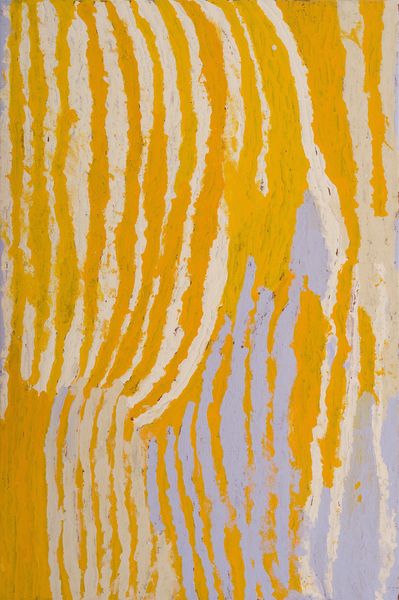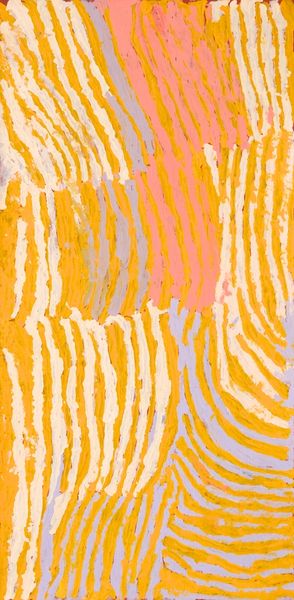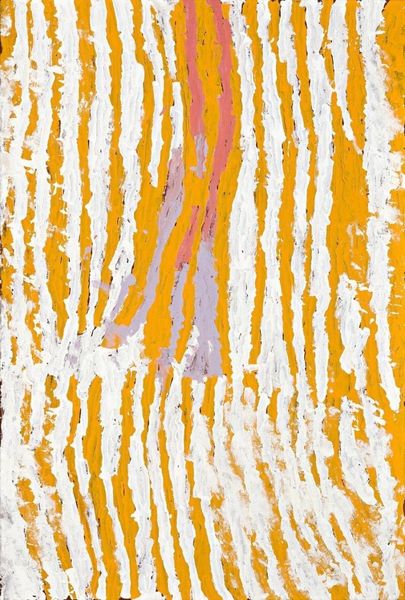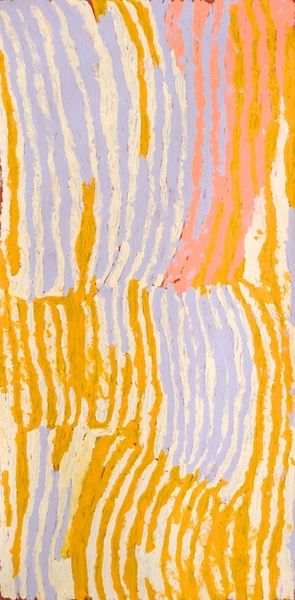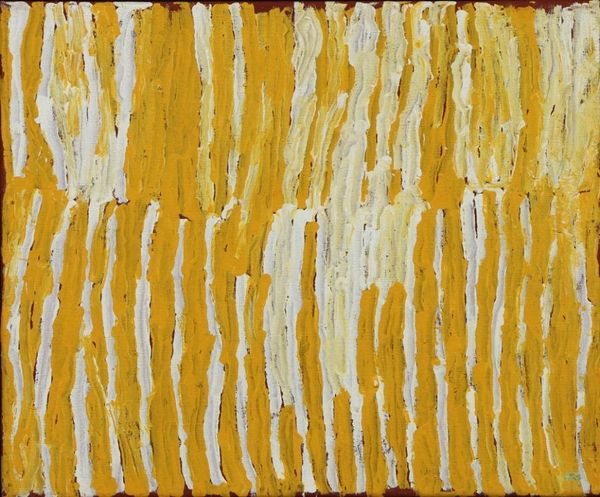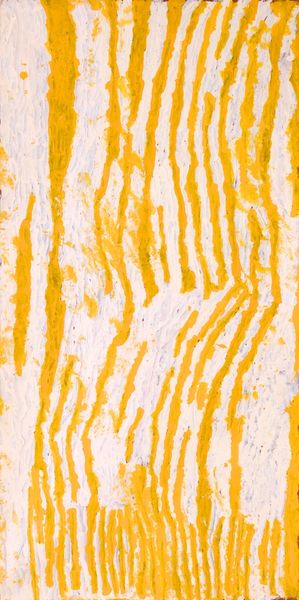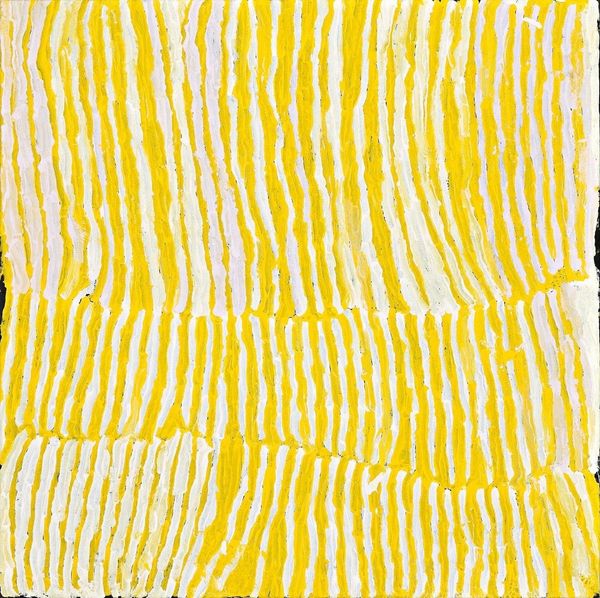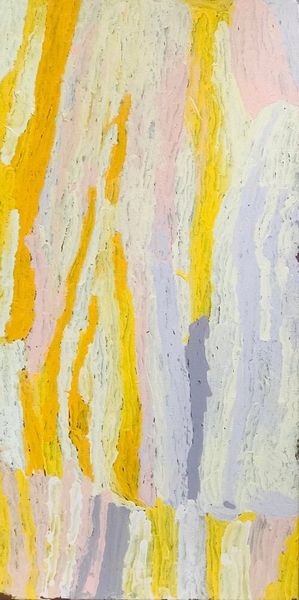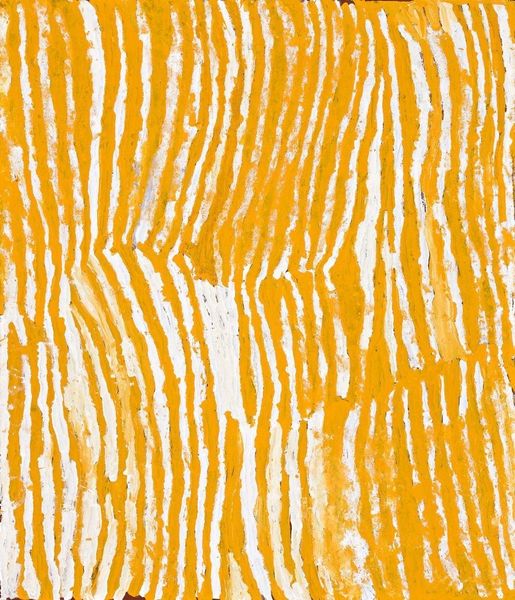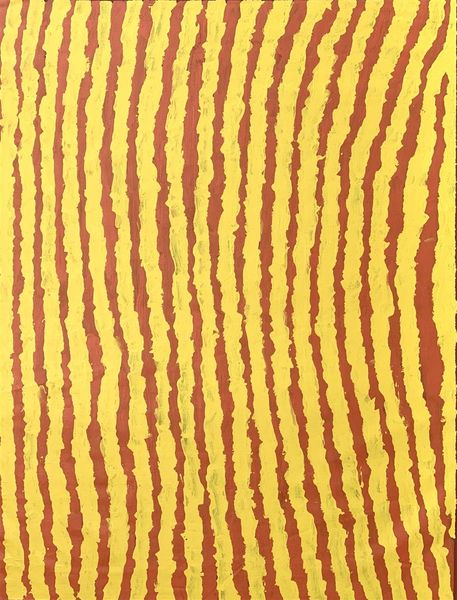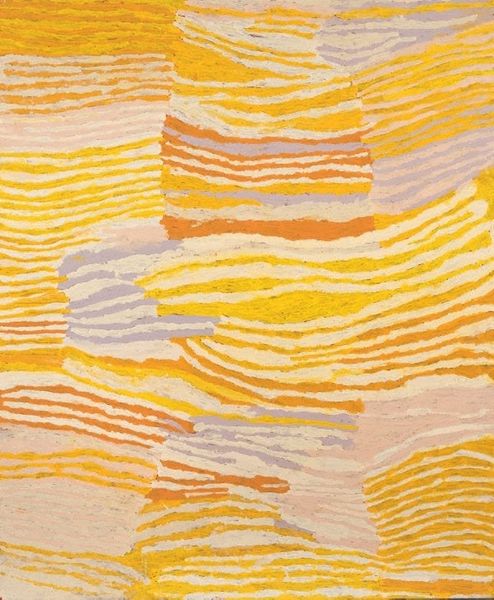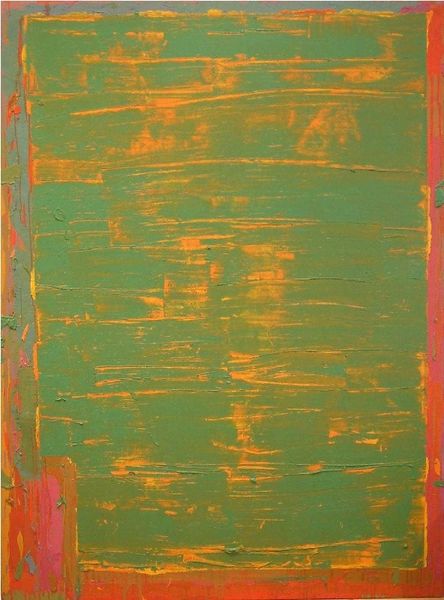
painting, acrylic-paint
#
abstract painting
#
painting
#
acrylic-paint
#
acrylic on canvas
#
organic pattern
#
abstraction
#
line
#
abstract art
Copyright: Makinti Napanangka,Fair Use
Curator: This is a 2006 painting by Makinti Napanangka, titled "Untitled." It's acrylic on canvas, featuring a series of lines in vibrant yellows and creams over a deep red ground. What strikes you immediately? Editor: Visually, it’s immediately striking! The contrast is high, creating a strong visual vibration, and I find it evokes both order and something wild at once, a seeming contradiction which is quite exciting. There’s an immediate raw energy in the application of the paint. Curator: That rawness is crucial. Napanangka's work exists at an interesting intersection, both within Indigenous art history and broader global abstract movements. How do you feel its public exhibition and the art market around indigenous work impacts its reception? Editor: Absolutely, the cultural context profoundly shapes interpretation. When Indigenous art enters major collections, there's the potential for a productive dialogue – but it also presents the risks of commodification, cultural appropriation, or perpetuating colonial frameworks. Who gets to tell the story matters. I’d ask how this particular work speaks to contemporary theories on representation, cultural identity and agency. Curator: Well, let's delve a bit deeper into its creation and consider the setting that the Papunya Tula art movement provided, especially its significance for Indigenous self-determination through art. In the painting, there is evidence of a distinctive mark-making which reveals inherited knowledge, transmitted within a rich cultural heritage. The formal elements act in synergy to encode her custodial responsibility to country. What considerations should curators consider to respect Napanangka's heritage and knowledge system? Editor: Authenticity and community involvement are paramount. Provenance research, culturally sensitive display, collaborating with Indigenous advisors... all essential for honoring the artist's intent. We must question how the Western art system's criteria – aesthetics, market value, "originality" – risk overshadowing the deeper meanings encoded within the artwork, such as in its use of line, colour and overall design, because this also carries inherent narratives central to community well-being. Curator: Exactly. For me, I read this “Untitled” painting as speaking volumes about that interplay between cultural knowledge, colonial encounters and Indigenous agency within art history, even today. Editor: I agree, seeing those complexities makes experiencing the artwork all the more meaningful, and remembering it as part of this crucial dialogue will impact viewers long after they move on.
Comments
No comments
Be the first to comment and join the conversation on the ultimate creative platform.
